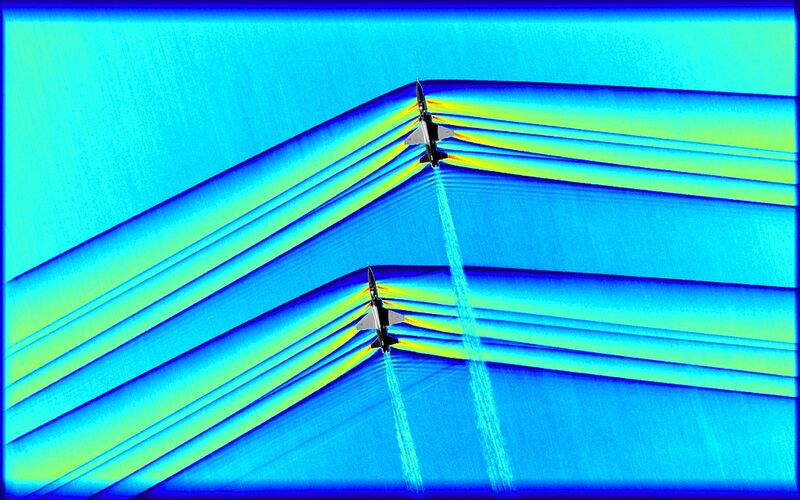
Original file (1,024 × 640 pixels, file size: 172 KB, MIME type: image/jpeg)
Summary
Summary
| Description |
English: One of the greatest challenges of the flight series was timing. In order to acquire this image, originally monochromatic and shown here as a colorized composite image, NASA flew a B-200, outfitted with an updated imaging system, at around 30,000 feet while the pair of T-38s were required to not only remain in formation, but to fly at supersonic speeds at the precise moment they were directly beneath the B-200. The images were captured as a result of all three aircraft being in the exact right place at the exact right time designated by NASA’s operations team. |
|---|---|
| Source |
https://www.nasa.gov/centers/armstrong/features/supersonic-shockwave-interaction.html |
| Date |
2019-03-05 |
| Author |
NASA photo |
| Permission (Reusing this file) |
|
File history
Click on a date/time to view the file as it appeared at that time.
| Date/Time | Thumbnail | Dimensions | User | Comment | |
|---|---|---|---|---|---|
| current | 13:33, 22 March 2024 |  | 1,024 × 640 (172 KB) | Isidore (talk | contribs) | == {{int:filedesc}} == {{Information |Description={{en|1=One of the greatest challenges of the flight series was timing. In order to acquire this image, originally monochromatic and shown here as a colorized composite image, NASA flew a B-200, outfitted with an updated imaging system, at around 30,000 feet while the pair of T-38s were required to not only remain in formation, but to fly at supersonic speeds at the precise moment they were directly beneath the B-200. The images were captured a... |
You cannot overwrite this file.
File usage
The following page uses this file: